Review: Samsung T259
Mar 11, 2011, 2:12 PM by Eric M. Zeman
updated Mar 18, 2011, 1:13 PM
Samsung kicks out a stellar voice phone for T-Mobile. See why Phone Scoop recommends the T259 flip phone for those who have the gift of gab.
Form
Is It Your Type?
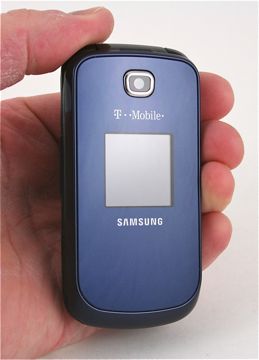
You probably won't find the Samsung T259 sitting in a shiny, well-lit display case at your local T-Mobile retailer. No, the spotlight is firmly on today's smartphones. That doesn't mean voice-centric handsets such as the T259 aren't a good buy. For those who do naught but make calls and want to skip all the fancy doo-dads, Samsung's T259 has plenty of appeal.
Body
The Samsung T259 is about as basic as they come. If we were to dial time back to about 2005, it would have been all the rage: smooth textures, clean design, small form factor, and good construction. The plastics of the T259 feel good, and it is easy to grasp the phone in one hand. The fit and finish are top notch, and nothing about the T259 feels chintzy or cheap. Its rounded edges make it a pocket-friendly device.
The T259 is a flip phone that thankfully avoids some of the pitfalls of this form factor. For one, the hinge is very well designed and sturdy. It has just the right amount of spring assistance to help flip it open. When held open, it isn't awkwardly long, nor is it unbalanced. Using it didn't fatigue my hand in any way.
They keypad and controls may be vanilla in terms of appearance, but less flair usually means more function when it comes to buttons on cell phones. All of the controls on the keypad are large enough for even the biggest thumbs to use with no trouble. The d-pad has distinct edges without being uncomfortable, and the satisfying "click" let's you know when it has been pressed. Flanking the d-pad are soft keys, a user-assignable shortcut key and messaging key. All four of these buttons, while somewhat flat, have solid feedback.
Below the d-pad control cluster, the T259 has Send/End keys, and the biggest Clear/Back button I've ever seen. As with the d-pad controls, these are lacking in shape, but have good travel. The number keys are nice and roomy, with plenty of surface area to work with. They have only slightly more shape to them than the other controls, but, again, they have excellent travel and feedback. It may not be the most visually appealing keypad design, but in this instance usability wins out.
The volume toggle is placed on the left side of the T259, and is easily reachable when the phone is both open and closed. There is a hatch covering the microSD card port below it. The hatch is easy to remove. Samsung has put a microUSB port on the right shoulder of the T259. Sadly, this port also doubles as the headphone jack, which will require an adapter to use. There's no standard round headset jack on the T259.
One of my few complaints about the hardware is the dedicated camera key. It's on the right side. It is a little on the small side, and the travel and feedback isn't as good as on the other buttons. My complaint is the positioning. It's literally only useful in one scenario — taking self portraits. Otherwise, the d-pad is much easier to use for taking pictures. Why place it in such an awkward spot?
The battery cover snaps off easily enough, but unless you need to pull out the battery or SIM card, there's no real reason to remove it.
The Three S's
Screen
The T259 has inner and outer displays. The exterior display measures 1.3 inches across the diagonal. Most of the time, it merely shows the clock, and other alerts and/or indicators. It also doubles as a camera viewfinder when taking self portraits. The resolution is low, but at least its colorful. Brightness isn't that great, however.
The main display packs 240 x 320 pixels into a 2.23-inch screen. The result is an amazingly nice looking display for such an inexpensive handset. It's colorful, bright, and offers enough pixels so that most text, icons and graphics on the screen look smooth and free of ragged edges. It works well enough outdoors.
Signal
The T259 easily picked up T-Mobile's 3G network where I live in NJ. During most of my testing period, it displayed two or three bars of service. This is a hair under what I normally see from T-Mobile devices. In a known T-Mobile weak spot, however, the T259 remained connected to the network and had no problems placing a call. The device didn't drop any calls while I tested it, but it did miss one, which went straight to voicemail. Data sessions were decent via 3G, and speeds felt consistent no matter what the signal indicator read.
Sound
Since the T259 is a voice-centric device, I had high expectations for it. Believe it or not, the T259 exceeded them. Voice calls were crystal clear 99% of the time. Only once did I hear a slight echo-y sound. Otherwise, voices came through the speaker with superb clarity. Better yet, the earpiece was capable of loudspeaker-esque volumes. Set to maximum, the T259 still maintained its cool, and though calls were really loud through the earpiece, they didn't distort and instead remained free of noise. Well done, Samsung! The speakerphone was not quite able to reach the same perceived decibel level, but the clarity still came through and it was loud enough for most use cases. Ringers and alert tones were acceptably noisy, though the vibrate alert was a bit on the weak side.
Battery
As I hoped, the T259 maintained a charge through a bare minimum two full days of use. Despite extensive testing — especially of voice calls — the battery indicator barely budged. Since a phone like this is probably going to be used less than a constantly-connected smartphone, it can probably go four or more days between charges.
Basics
Menus
The T259 runs a proprietary feature phone operating system and its menu system is a cinch to master in no time at all.
The home screen has two options that are accessible via the soft keys. To the left: Menu. To the right: Web. The main menu is a nine-icon grid that can't be altered or rearranged. The icons on this page are animated and will move around for you when you select them. Once you dig deeper than this screen, everything reverts to boring old text menus.
The menu options are lumped into categories that make sense, and I had no trouble at all finding everything I needed to adjust the T259's behavior.
As with most phones that have d-pads, users can activate app shortcuts by pressing on the directionals from the home screen. These can all be customized by the end user, as can the dedicated shortcut key and messaging key. The messaging key can only be customized to access different messaging features, however, and not other apps such as the media player.
Calls/Contacts
Calls
It's been so long since I've tested a phone with a physical dialpad, I forgot how nice it is to have. Aside from simply dialing numbers on the keypad, the T259 supports shortcuts for up to 99 contacts. If you actually dial a number, you can hit send to call it, or the soft key to access the options menu. This lets you add the number to contacts, etc. As you type numbers, it will sort through our contacts and display relevant matches. Pressing the send key before you dial a number opens the call history. The call history lumps everything into one tab (dialed, received, missed), but you can sort them out by tapping the d-pad sideways.
In-call options are pretty extensive. Aside from muting the microphone or turning on the speakerphone, the options allow you to access the web, calendar, contacts and other applications during a call.
Contacts
The contact application in a no-frills job that handles the basics well enough. The T259 comes preloaded with the usual assortment of T-Mobile contacts, but adding your own doesn't take too much effort. For existing customers, you should be able to use T-Mobile's account back-up service to retrieve contacts from T-Mobile's servers. If not, adding them one at a time is a little painful via the 12-key dialpad. Though you can access Facebook and Google accounts from the browser, it's not possible to sync data from those accounts to the T259.
Each contact holds 4 phone numbers, one email address, one street address and other items such as notes, birthday, ringtone and picture ID. Disappointingly, you can't add an IM handle or web address.
Messaging
The T259 is somewhat limited in its messaging capabilities. It has SMS/MMS, email, and a catch-all social networking application, but doesn't include Instant Messaging.
The SMS/MMS application is bare bones, though messages are easy to compose. I stuck with T9 to make tapping out texts faster. Once you've composed a message, the tools for adding video, images, or sounds are all there at the bottom of the screen and require but a click. Sadly, messages are not threaded.
In order to use the email application, you have to subscribe to a data plan. It's typical of feature phone email apps. Configuring it is easy enough, but it is best used to simply read messages rather than actually respond to them. Alternately, you can access email via the browser, but that also eats up data.
The Social Buzz application is on board, and it collects status updates from Twitter, Facebook and MySpace. It offers the bare minimum of functionality, but is enough to let users post updates of their own, as well as get the scoop on what their friends are up to.
(You'll get a somewhat richer social networking experience if you choose to access them via the web browser instead.)
Extras
Media
Music
The T259 is not about delivering a killer media experience. Even so, it does include a media player. Users can sideload their own songs via the microSD card, and play them back on the handset. Without a dedicated headset jack, however, the experience requires an adapter. Alternately, you can play music back through stereo Bluetooth headphones.
The player itself will let you sort through albums, tracks, and artists. None of my album art came through, and the device didn't play nice with any of my AAC / mp4 files. MP3 files played back with no problem, however. Music sounded OK.
Video
The T259 can play back any video you've recorded with the handset itself, but I was unable to get it to play back any of my M4V movie files.
Camera
Camera
The camera launches in about three seconds with a press of the dedicated camera key. It includes a typical set of controls and tools for an entry-level feature phone.
The default viewfinder has a box in the center of the screen to help you compose images, but the camera lacks auto-focus. Pressing the d-pad up or down will zoom the camera (when not at the maximum megapixel setting), and pressing the d-pad left or right will decrease or increase the brightness accordingly.
Settings are accessed via the left soft key, which activates a dock at the top of the display. Use the d-pad to navigate sideways through the dock, and it offers drop-down menus for each individual item, such as capture mode, night mode, white balance, etc. It actually includes a large number of controls for such an inexpensive phone, including Panorama and Smile shot motes.
The camera captures images in about 1 second, and can be set to return to the camera right away, or take you to a review screen first. The review screen requires that you do something with the image (save it, send it, trash it) before you can shoot again.
If you want to take self portraits, close the phone while the camera app is running and the outer display turns into a viewfinder. Aim it at yourself and use the dedicated camera button to capture your vain self.
Gallery
The gallery application is surprisingly feature-rich. While the base appearance is a simple list of images — which can be accessed in groups sorted by phone memory and microSD card — the editing capabilities are highly advanced.
Samsung appears to have packed all the editing powers of its high-end Android devices into this little phone. Pretty much any which way you can think to alter an image is possible with the T259's tools, which go well beyond crop, rotate, and flip. Users can apply frames, add text, insert graphics, as well as adjust brightness, contract, and color. There are huge number of filters and other effects that can be added to photos.
Pictures can be saved to online albums, printed via USB or Bluetooth, or simply set as a picture ID or wallpaper.
Photos/Video
Photos
The T259 has a 2 megapixel shooter, with no flash, and no auto-focus. Even though it lacks advanced features, it really did a pretty good job at capturing images. Pictures I took were mostly in focus and relatively sharp, though there was more grain in them than I'd like to see. White balance was often accurate, and brightness levels were typically spot on. The T259's true weakness is in dimly lit areas, where the camera performed poorly. I'd rate these photos MMS worthy, but not much beyond that.
Video
The video camera allows video to be captured at up to 320 x 240 (QVGA) resolution. It can be set to MMS-optimized or left to record until the memory card runs out. As with the the still camera, it offers plenty of customization and tools for getting most out of your video.
On the quality side of the equation, even set to maximum, you're not going to get more than MMS-worthy video from the T259. The basic scene you're recording — as long as it is well illuminated — will be visible, but most details are lost in the grain and soft focus.

3GPP / MPEG-4 format (viewable with QuickTime)
Browse/Customize
Browser
The T259 offers T-Mobile's web2Go services via the browser. The browser loads mobile and WAP sites fairly quickly via T-Mobile's 3G network. Full HTML sites take a lot longer to load. The CNN mobile site popped up in a snap, even though it is sodden with images, advertisements and tons of text. T-Mobile's web2go portal has been well-designed for easy-to-navigate access to web sites with the minimal amount of pecking in web addresses. If you want to leave the realm of all things T-Mobile, you have to break out the URL bar and go through the painstaking process of typing in URLs manually. The browser itself offers enough tools to optimize the experience, but it will take some work to set up the browser with enough shortcuts and other tweaks to make it worth using.
Customize
Users can adjust many of the T259's settings easily through the settings menu. Ringers, alert tones, wallpapers, themes and such are quickly manipulated. I really like that the T259 offers ringer profiles, each of which can be customized to suit user needs. Dialing fonts can be changed, as well as made smaller or larger. It's not as insanely flexible as many smartphones are, but users can at least make the handset feel more their own.
Extras
Bluetooth
The T259 can handle mono and stereo Bluetooth headsets, as well as file transfers to other Bluetooth devices and mobile printing. All of the Bluetooth features worked without any trouble. Sound quality of phone calls through mono headsets was fantastic. Music sounded good through stereo headphones.
Clock
The outer display has but one clock option — a nearly impossible-to-see analog clock. The clock has yellow elements on a black display. It's hard to see in a well-lit room, let alone outdoors. There's a nice, large digital clock that's visible on the home screen.
Wrap-Up
The T259's clear forte are its voice capabilities. Call quality was superb all around, even though Bluetooth headsets. Battery life is commendable, and the T259 never had any problems with T-Mobile's network.
The T259's other features at least mean you can have a little bit of fun with it if you are so inclined, but the performance of apps such as the media player can't possibly match higher-end devices. It's worth repeating that the camera software is decent, and the T259 manages to take at least MMS-worthy photos on a consistent basis. The browser and T-Mobile's web2go services aren't blazing fast, but they are easy to use and offer an avenue out into the wider web.
If you're in the market for a low-cost, well-performing voice phone, the T259 from Samsung is a solid option.

Comments
Why?
That bugs me. lol.


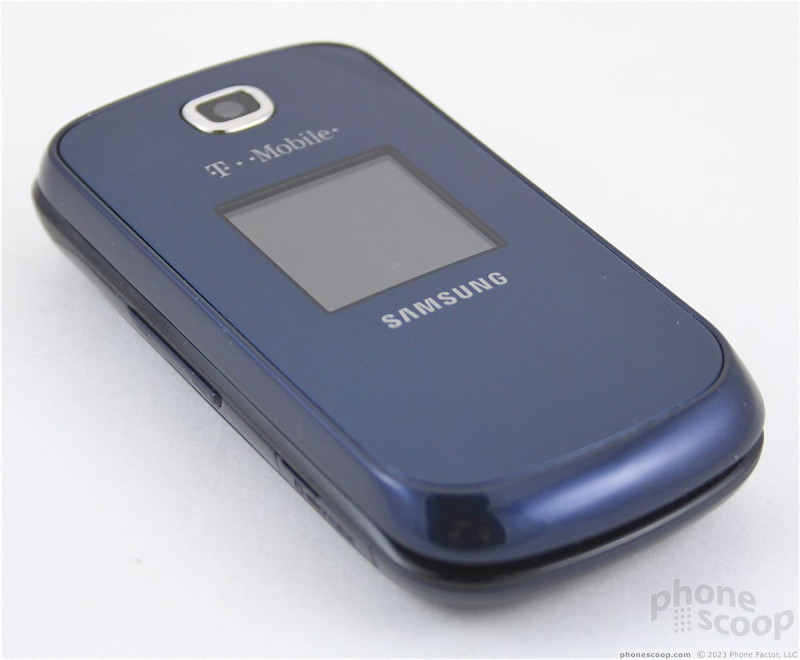










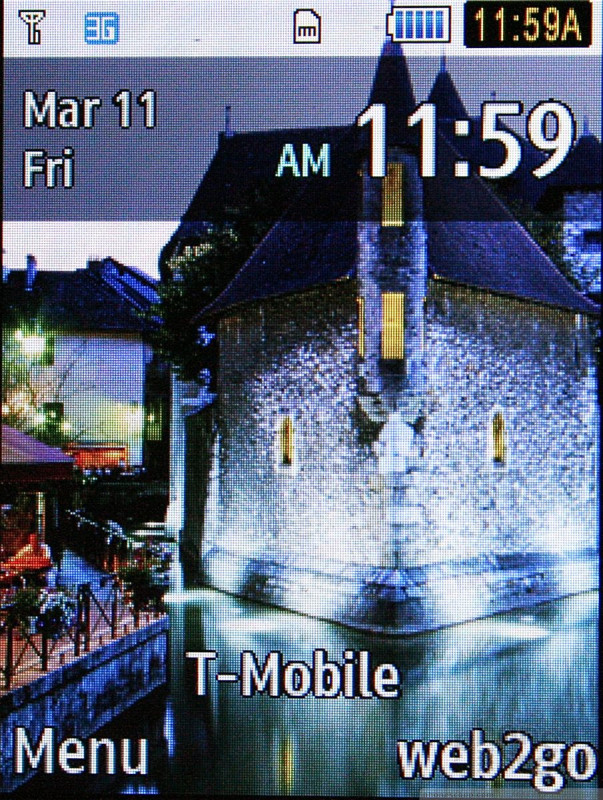



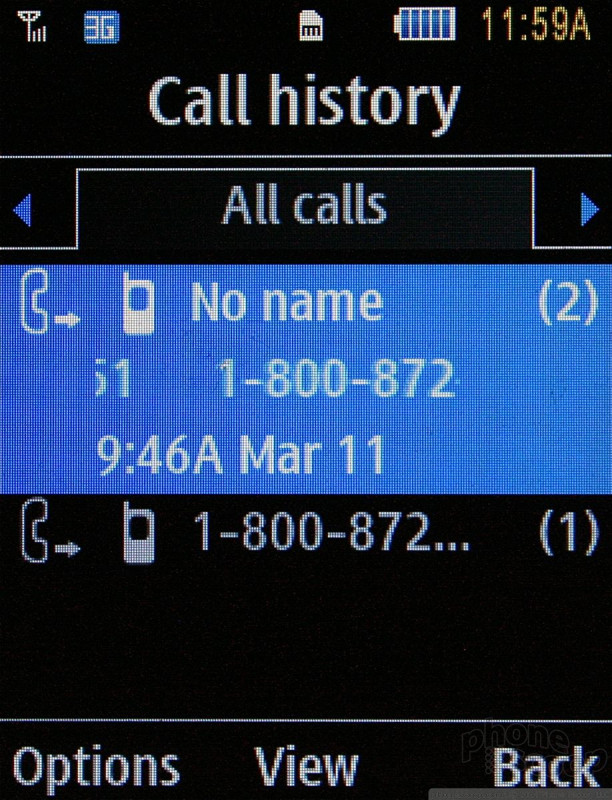


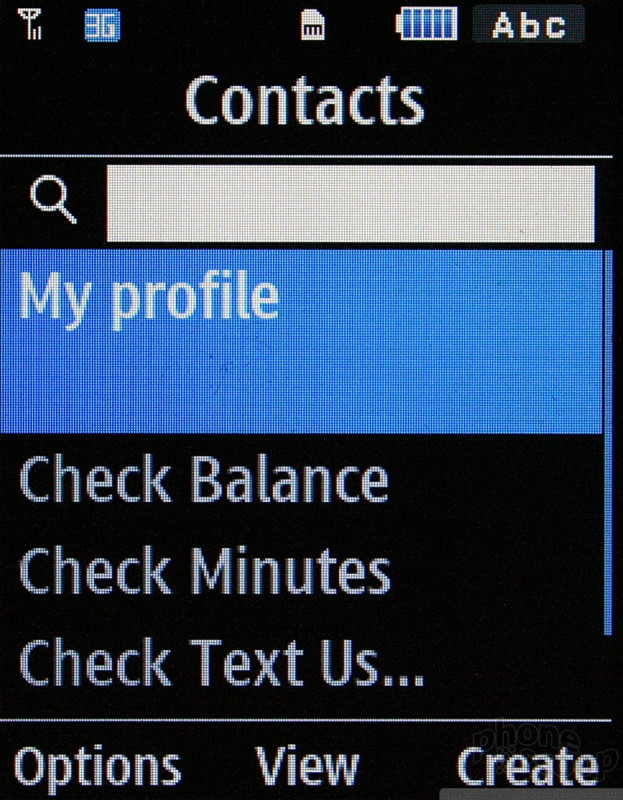



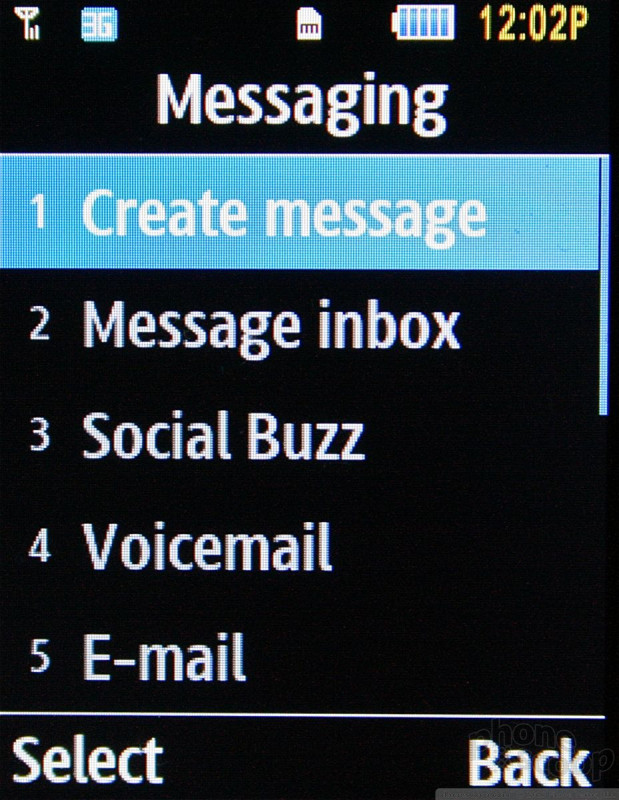



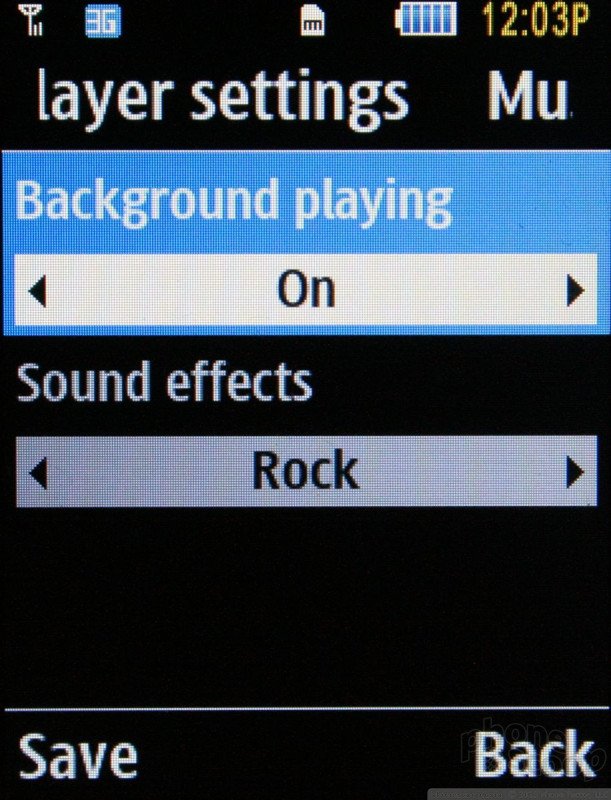



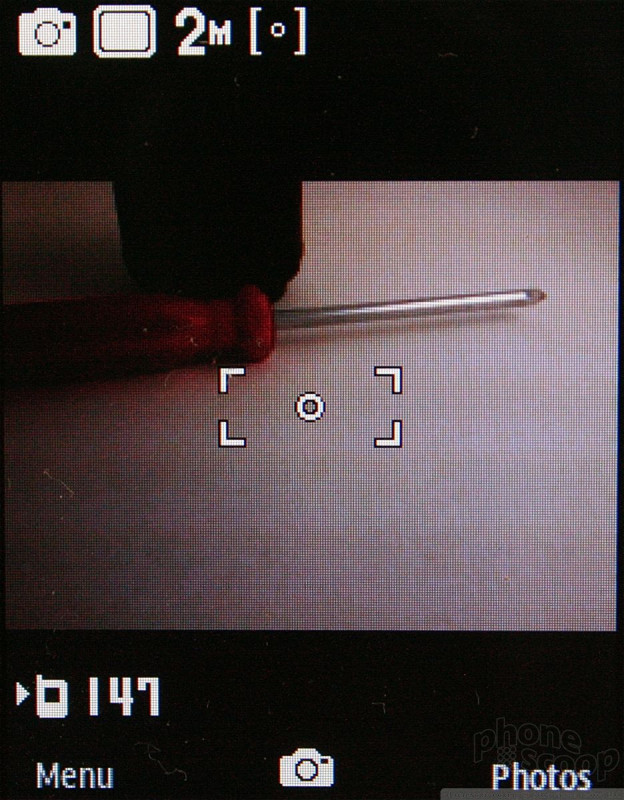


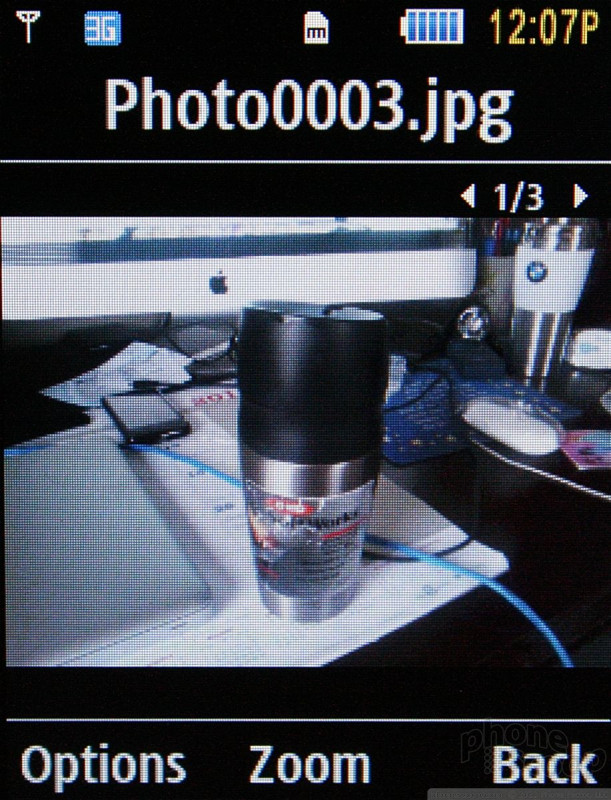



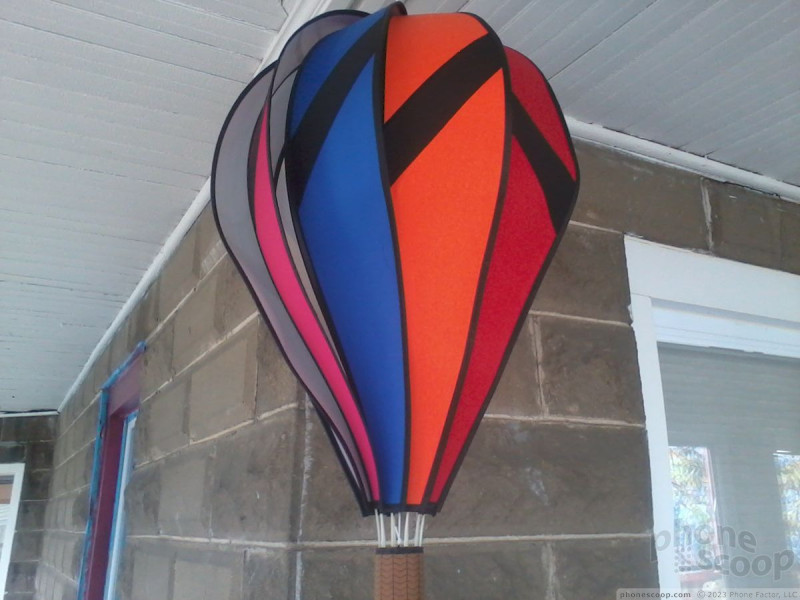











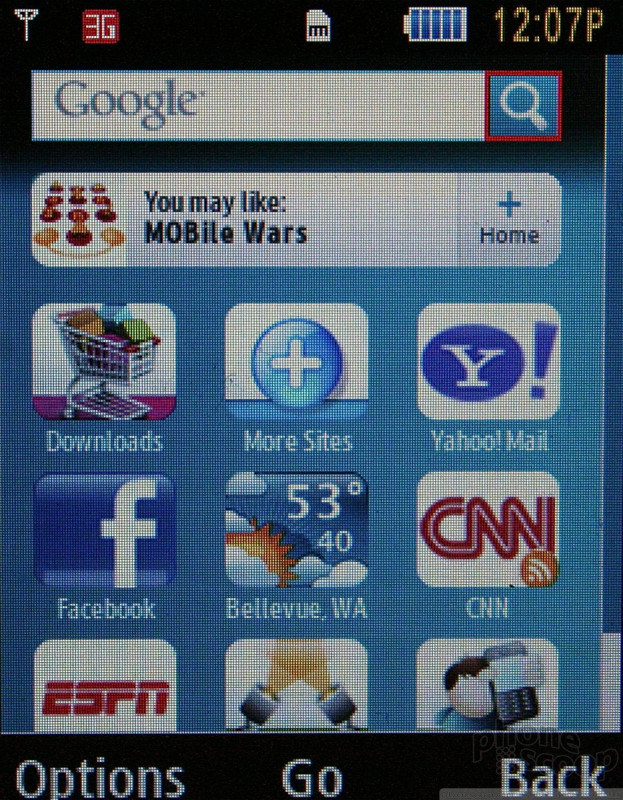



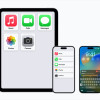 Apple Previews Major New Accessibility Features for iOS
Apple Previews Major New Accessibility Features for iOS
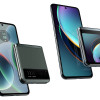 Motorola Gets Serious About Foldables with New RAZR Lineup
Motorola Gets Serious About Foldables with New RAZR Lineup
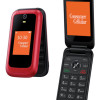 Consumer Cellular Launches Flip Phone with eSIM
Consumer Cellular Launches Flip Phone with eSIM
 Total by Verizon Rebrands, Remixes Plans
Total by Verizon Rebrands, Remixes Plans
 Google, TSA Testing New "ID Pass" in Wallet, Created by Scanning Passport
Google, TSA Testing New "ID Pass" in Wallet, Created by Scanning Passport
 Samsung SGH-T259
Samsung SGH-T259





